Warm climates, like those found in the Midwest and South, are ideal for the growth of Zoysia grass. ZIn this article, I’ll share with you my best tips on how to overseed a zoysia grass lawn.
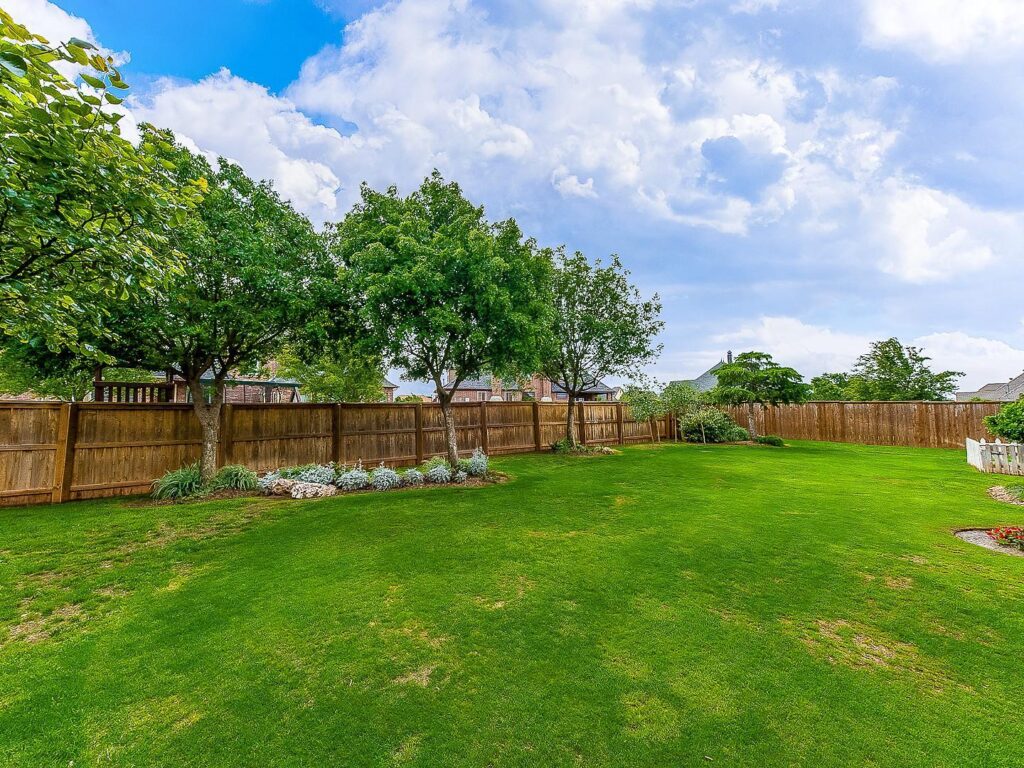
Zoysia grass is from Asia, although it’s been in the US since 1895 when the first lawns appeared.
Zoysia grass requires intensive maintenance, just like any other turf grass, if you want to keep it looking and feeling healthy and green. Unfortunately, even with meticulous maintenance, Zoysia grass can sometimes experience decline or grow bare spots. In such a case, Zoysia grass overseeding can assist in restoring the lawn.
But that is not all! The process of overseeding can also be used to quickly and easily increase the density and color of your existing Zoysia grass lawn.
Zoysia is a coarse grass that thrives in various soils and favors sun over shade. Extreme drought conditions can make it brown and dormant, which can tempt homeowners to overseed their lawns. However, when it comes to Zoysia grass, there are a number of other considerations to take into account as well. And before you can overseed your Zoysia grass, you’ll need to figure out the underlying problem causing the damage.
Browning and patchiness in a Zoysia grass lawn are most commonly caused by drought, but other factors, such as Hunting billbugs, Chinch bugs, and fungal infections, should not be ignored. To overseed a Zoysia lawn, you simply sow new Zoysia grass seeds on top of the current turf. New Zoysia seeds will grow into a thicker, healthier lawn that will be the envy of the neighborhood.
That said, there is much more to overseeding a Zoysia grass lawn. Read on to find out!
Related: Zoysia Grass 101: How To Grow A Healthy Zoysia Grass Lawn & What Are Its Pros & Cons?
What Makes Zoysia Grass Patchy & Brown?
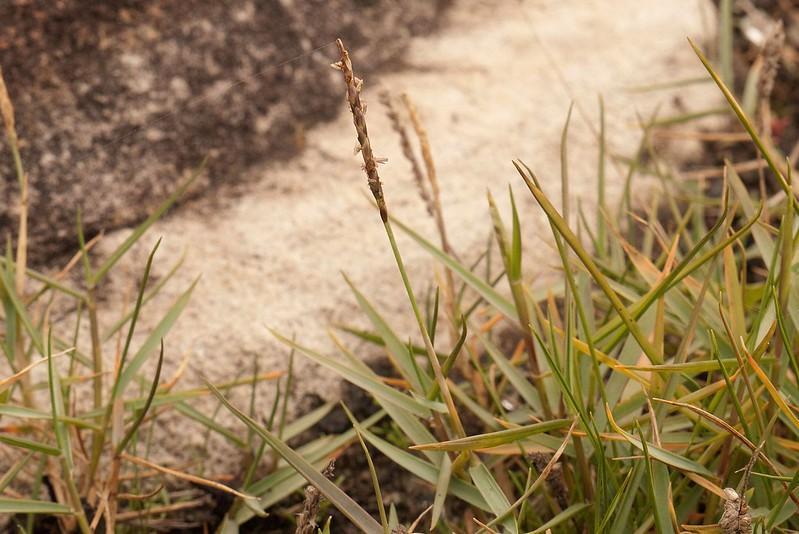
Brown patch is perhaps the most common Zoysia grass disease, causing large portions of the lawn to die.
Pests and diseases can kill large patches of Zoysia grass on your lawn. But, to choose the most effective treatment, you need to know who or what is to blame. Pesticides and insecticides will only be effective if the right product is used at the right time.
Additionally, taking precautions before issues arise can lessen the use of chemicals needed to control and prevent these issues in the future. Nevertheless, here are the most common factors behind a patchy and brown Zoysia grass lawn described in detail:
Hunting Billbugs Infestation
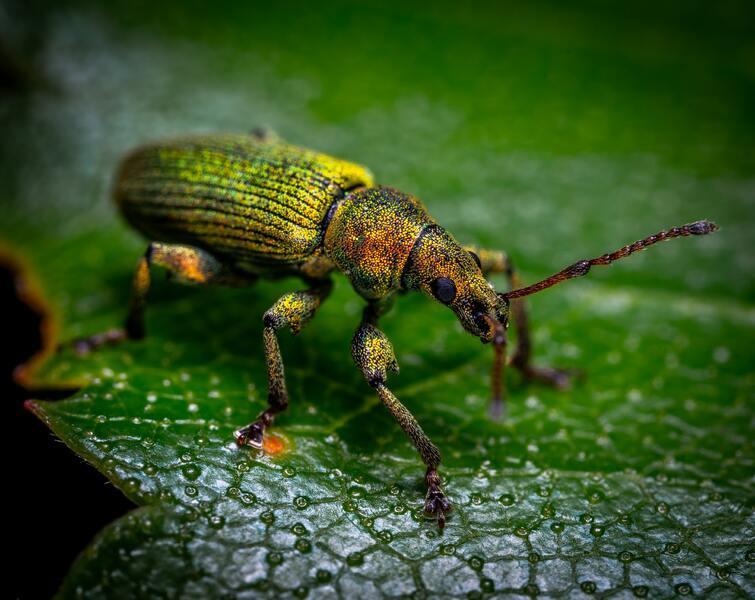
The hunting billbug is also known as the “Zoysia billbug” in Florida.
Hunting billbugs are most active at night and early in the morning. Adults are around half an inch long, with a bent snout, and have reddish brown to black color.
Billbug larvae prosper in the Zoysia’s lower leaf stem in the middle to late spring and early summer, causing massive damage. The tipping point occurs in the early summer when the developing larvae feed on the stolons of the plant.
At this stage, Zoysia will readily peel away from the soil, and symptoms will appear as yellow spots that will gradually brown and die out, imitating the damage caused by drought.
How To Get Rid Of Hunting Billbugs In Your Zoysia Grass?
Watering your grass a few days before applying insecticide will help bring billbug larvae closer to the surface, which will increase the effectiveness of your treatment against these nasty pests.
Then, in places where hunting billbug destruction has been observed, prophylactic treatment of a long-lasting pesticide should be administered between the end of May and the beginning of June to target both the adults and the larvae of the pest.
Chinch Bugs Infestation
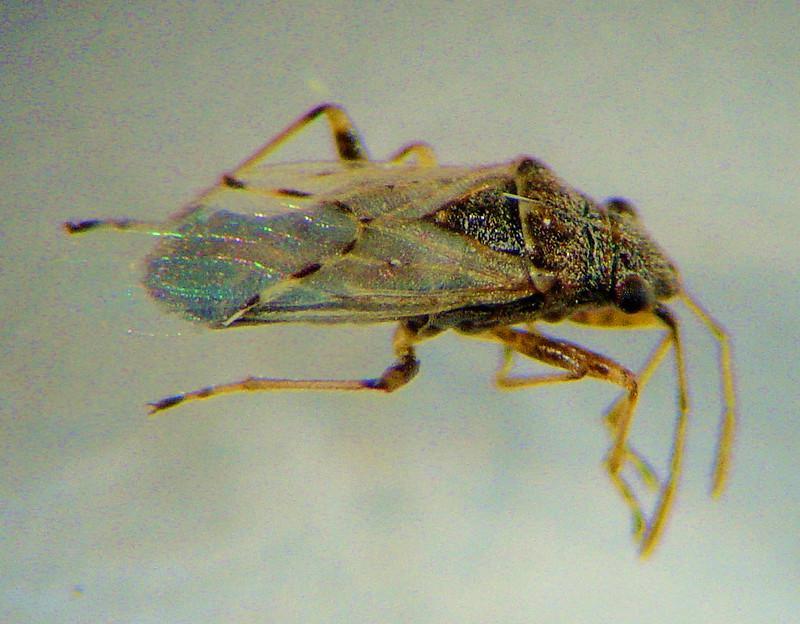
Although modest in size, chinch bugs (Blissus leucopterus) can cause significant harm to your grass.
Chinch bugs, which are the most prevalent type of insect that attacks Zoysia grass, may quickly spread and kill large expanses of lawn. However, during the hot and dry months of summer, when these insects do most of their damage, it might be difficult to tell the difference between the impacts of the drought and their visits.
Their patterns, however, are predictable. The areas that are affected are not patchworked but rather continuous, and they will typically begin on one side of the grass and migrate across the rest of it as the chinch bug population grows and moves. Therefore, the worst damage occurs along the edges of the lawn, where the walkways and drives meet.
How To Get Rid Of Chinch Bugs In Your Zoysia Grass?
Identifying chinch bug damage is as simple as pulling up patches of Zoysia along the edges and watching for the fast-moving, little black bugs that are only 3/16 of an inch in length.
In the event that chinch bugs are present, the only way to get rid of the problem is to use a curative insecticide. There is no other solution.
Also, it is not advisable to employ preventative insecticide applications that are aimed against chinch bugs in the infested area since the arrival of chinch bugs is random from year to year.
Brown Patch Disease
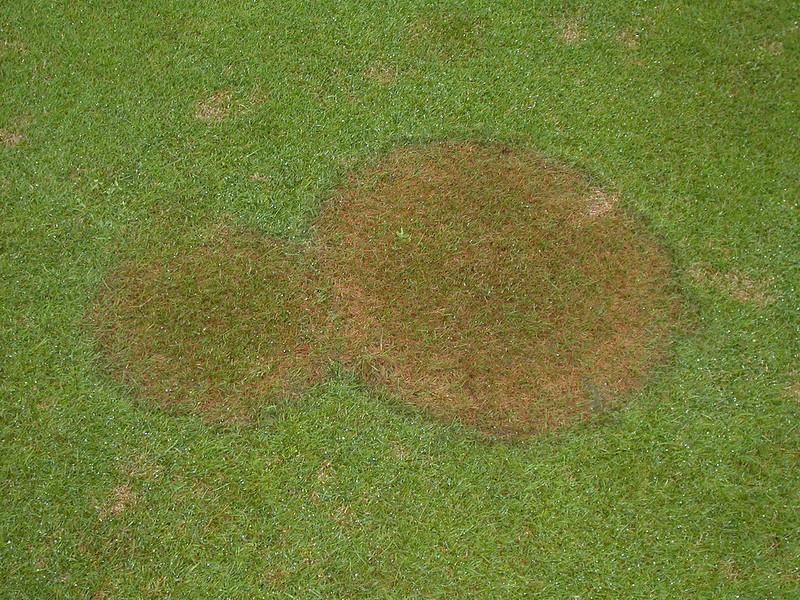
The brown patch disease is caused by fungi and typically appears on lawns during the warm season.
Rhizoctonia solani is a soil-borne fungal pathogen that is the third most common problem associated with patchy Zoysia grass. The symptoms of large patch disease, which are also known as brown patch disease, arise in the fall and are at their worst when the temperature drops, as this causes Zoysia grass growth to slow down.
Furthermore, the large patch disease is particularly severe and expands swiftly on saturated or flooded soils caused by our periodic rainfall. It is one of its most irritating features that brown patch disease may cause so much damage and take so long to treat.
Infected areas can be as small as 6 inches or as vast as many feet.
How To Get Rid Of Brown Patch Disease In Your Zoysia Grass?
Controlling large patch disease is not an easy task, and researchers are constantly figuring out crucial components of the disease cycle in order to design disease management strategies that are more efficient. Unfortunately, you may also have to wait after the treatment till the active growth season to notice an improvement in your lawn’s look.
Even while an application of fungicide can help limit the spread to neighboring places, damaged areas will still require to be reseeded if they are to be restored.
Last but not least, a simple increase in air circulation in the lawn can treat many instances of brown patch disease by lowering the relative humidity that the fungus requires to thrive.
Related: Zoysia Grass – Popular Types | How To Choose The Right Zoysia For Your Lawn
How To Overseed A Zoysia Grass Lawn Correctly?
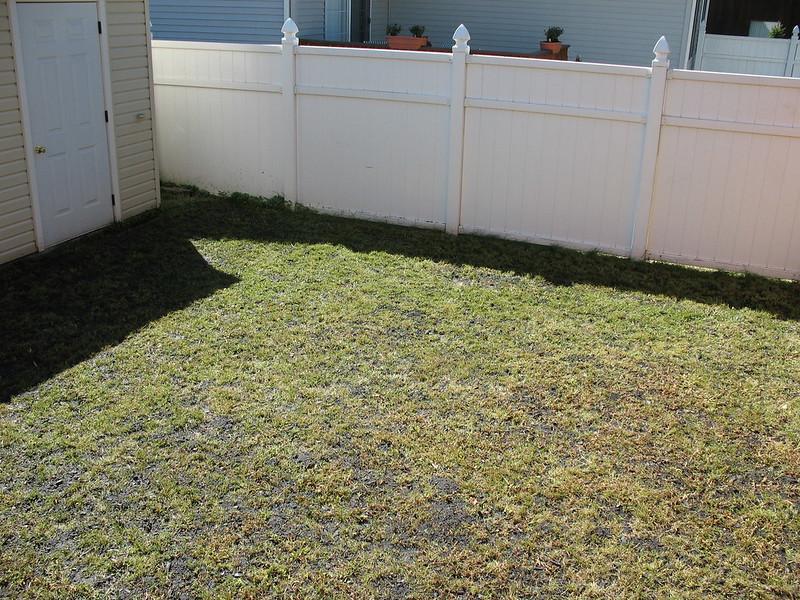
Overseeding is the practice of sowing grass seed directly into existing turf without disturbing the turf or soil.
So, now that you know the causes behind patchy and brown Zoysia grass lawns let us go ahead and learn the correct way to reseed or overseed an existing Zoysia grass turf. It is vital to overseed your lawn with Zoysia grass to cover any bald patches and build a healthy lawn.
Additionally, during the winter dormancy period, Zoysia grass will become brown in warmer climates. However, if you overseed your lawn with a cool-season grass species, your Zoysia grass lawn will retain part of its green color throughout the winter.
Collect & Remove Debris
The first thing that needs to be done to get the seedbed ready is to clear away trash, stones, boulders, pinecones, straws, or any other type of ground cover.
Spend a good time clearing the grass of dead leaves, pine straw, sticks, and other debris.
It will be easier to spread the seed if any hurdles are first cleared away. Debris can also make it difficult for newly planted seeds to make proper contact with the soil.
Cut The Grass Short
Reduce the height of the grass to roughly an inch, ensuring that there is sufficient contact between the seed and the soil. When the grass gets tall, the seeds become entangled between the blades and may not be able to fall to the ground.
During this cut, you should also bag the clippings. It is also not a good idea to mulch the clippings because they will create a barrier between the grass seed and the soil.
Prepare The Soil
Repair any areas of compacted soil or thatch right away. For example, dethatching can prepare existing turf by removing dead grass from below actively growing turf. It restricts the amount of water, fertilizer, and grass seed that may penetrate the soil.
However, aeration is necessary for soil that has been compacted.
This requires making holes in the ground to break up the compacted soil. In addition to that, rake off any rocks or thatch that you find. Using force when raking the grass is acceptable as long as it is not torn up or severely damaged.
Distribute The Seeds
Spread the seeds of Zoysia grass in a uniform manner. Use a hand spreader for applications on smaller areas of your lawn or spot treatments. However, the use of a push broadcast spreader is recommended for areas larger than a quarter acre.
A rate of 2 pounds of seed per 1,000 square feet is recommended for effective overseeding of Zoysia. To determine how much seed you will need, divide the total area of your lawn by the percentage of its surface that seeds should cover.
In addition, make sure that you follow the instructions provided by the spreader regarding the application rates and walking guidelines. This will guarantee that the seeds are disseminated evenly, resulting in the revitalized grass having uniform coverage.
Cover The Seeds
The newly planted Zoysia seeds should be covered with sand or dirt about 1/8 inch thick. Other options for covering the seeds include using mulched grass clippings, sand, or dirt. The additional material increases the seed’s contact with the soil and helps the ground retain water. However, if there is an excessive cover, the seeds might not be able to germinate.
Apply A Fertilizer
Remember that the finest fertilizers for Zoysia grass will have a high nitrogen concentration. First, however, conduct a soil test to see whether or not it is deficient in any nutrients and then apply a suitable fertilizer in accordance with the test results.
Also, keep the grass free from weeds, feed products, and pesticides following seeding. It is because they can also inhibit grass seeds’ growth and germination.
Keep The Soil Moist
The most essential thing a lawn owner can do for their Zoysia lawn is to ensure the seeds don’t dry out. The seeds of Zoysia grass need to be soaked in water at a depth of two to three inches every other day for the first three weeks. Also, remember that if the weather is particularly warm, you will need to water your plants more frequently.
Related: How To Make Your Zoysia Grass Spread Faster? A Comprehensive Guide
Best Time To Overseed A Zoysia Lawn

Spring marks the beginning of Zoysia’s growing season, which lasts until summer.
When choosing a date for overseeding, homeowners should keep an eye on the local weather prediction. It is imperative that extremes of temperature, such as extreme cold or heat, be avoided at all costs.
Additionally, the days that are ideal for planting will change depending on the USDA Climate Zone. The below table contains several dates that, depending on your area, are recommended for overseeding a Zoysia lawn.
It is important to note here that the dates that are shown below are merely suggestions. Last but not least, if there is even a slight possibility of frost in the upcoming forecast, overseeding a Zoysia lawn should be avoided at all costs.
When temperatures are extremely high, it can be difficult for seeds to germinate. Therefore, Overseeding a Zoysia lawn is best done when the weather is mild. Spring marks the beginning of its primary growing season and continues through the summer’s end.
| Zone | Last Expected Frost Date | Suggested Planting Time |
| USDA Zone 6 | April 10th to April 20th | April 25th to May 20th |
| USDA Zone 7 | March 20th to April 1st | April 10th to May 15th |
| USDA Zone 8 | March 10th to March 25th | April 5th to May 20th |
| USDA Zone 9 | February 15th to March 1st | March 20th to April 25th |
| USDA Zone 10 | February 1st to March 1st | March 15th to April 25th |
Maintaining An Overseeded Zoysia Lawn
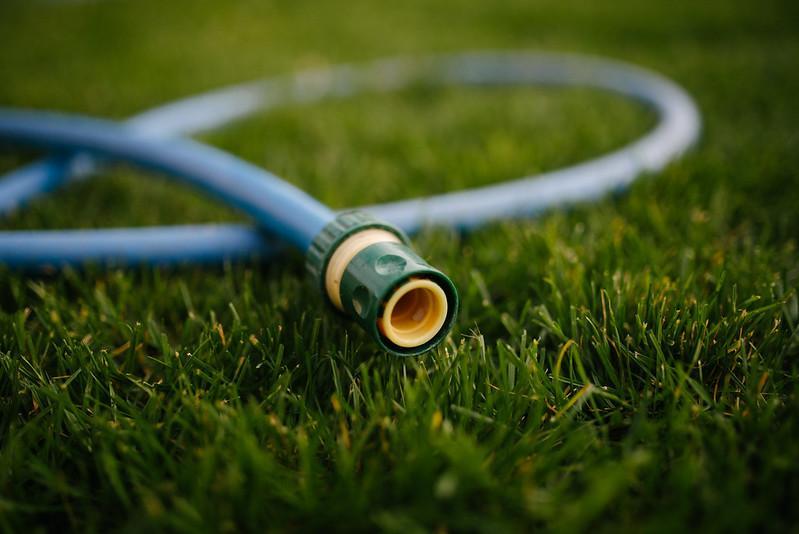
Don’t forget that a well-watered Zoysia lawn is essential for the success of your overseeding project.
Once you have overseeded your law, you are NOT done. Here’s what you need to do next:
- It takes about 14 to 21 days for growth to become noticeable. And, when the grass has grown to a height of two inches or more, mow the overseeded lawn.
- Healthy grass is less likely to be damaged by insects, and fertilization plays a role in that. Also, when appropriately fertilized, the grass blades become thick and green.
- Remember that watering the lawn too frequently can encourage pest infestations. So, for the best outcomes, be sure to take water readings on a frequent basis.
- Overseeded Zoysia lawns require ample water for the seed to germinate and grow. Start by watering the seeds once a day until they sprout. Then, adjust accordingly!
Final Thoughts
Even with the finest care, damage from dryness and pests can lead the Zoysia grass to brown or go dormant. In the event that the turf sustains considerable damage and bare spots develop, overseeding it can assist in repairing and saving your turf.
When you overseed a yard, you sow new Zoysia grass seeds over the top of the current turf. New Zoysia seeds will grow into a thicker, healthier lawn that will be the envy of the neighborhood.
Frequently Asked Questions (FAQs)
What can you overseed Zoysia with?
Ryegrass, which can be either annual or perennial and develops rapidly, is a popular option for overseeding Zoysia grass lawns because of its versatility.
It does, however, compete with the established lawn. Therefore, rough bluegrass, also known as Poa trivialis, is the superior option if you need to overseed.
How do you encourage Zoysia to spread?
Despite its slow growth rate, Zoysia grass can spread and develop more quickly with fertilizer, regular mowing, core aeration, dethatching, and ample amounts of water. You can also put 1/2 inch of sand over low regions in mid to late spring when Zoysia grass is actively developing; it will swiftly grow through the material.
How do you fill bare spots in Zoysia?
You can either wait for the native Zoysia to spread and fill in the gaps or accelerate the process by inserting plugs. Smaller bare places in Zoysia grass will fill in over time. However, if your patchy regions cover the width of your multi-acre lawn, seeding Zoysia is frequently the most cost-effective approach to fill them in.
Does Zoysia grass reseed itself?
Zoysia grass does not reseeds itself as it is a spreading grass that fills in an area by sending out new roots rather than spores or seeds. This contributes to the robust root system and extensive ground cover it provides. In most cases, the extensive root system will be sufficient to prevent the growth of other kinds of grasses and weeds in the area as well.
Why is my Zoysia grass dying?
Zoysia grass cannot tolerate prolonged water exposure and may perish in low locations prone to flooding. In addition, brown spot, rust, and chinch bugs are some examples of some other diseases and pests that can cause the death of your Zoysia grass.
Sources For Further Reading
Zoysiagrass. (2022). Clemson University Cooperative Extension Service. Retrieved October 8th, 2022, from https://hgic.clemson.edu/factsheet/Zoysiagrass/
Zoysiagrass Yearly Maintenance Program. (2022). Clemson University Extension. Retrieved October 8th, 2022, from https://hgic.clemson.edu/factsheet/Zoysiagrass-maintenance-calendar/
Planting and Maintaining a Zoysia Lawn | University of Maryland Extension. (2022). Retrieved October 8th, 2022, from https://extension.umd.edu/resource/planting-and-maintaining-Zoysia-lawn
Editor’s Recommendations
Sevin Dust 101: How To Use Sevin Dust To Control Pests, and Is It Safe?
The Correct Way To Cut Lawn Edges | A Comprehensive Guide
What To Do With Grass Clippings | 10 Smart Ways To Recycle Grass Clippings







